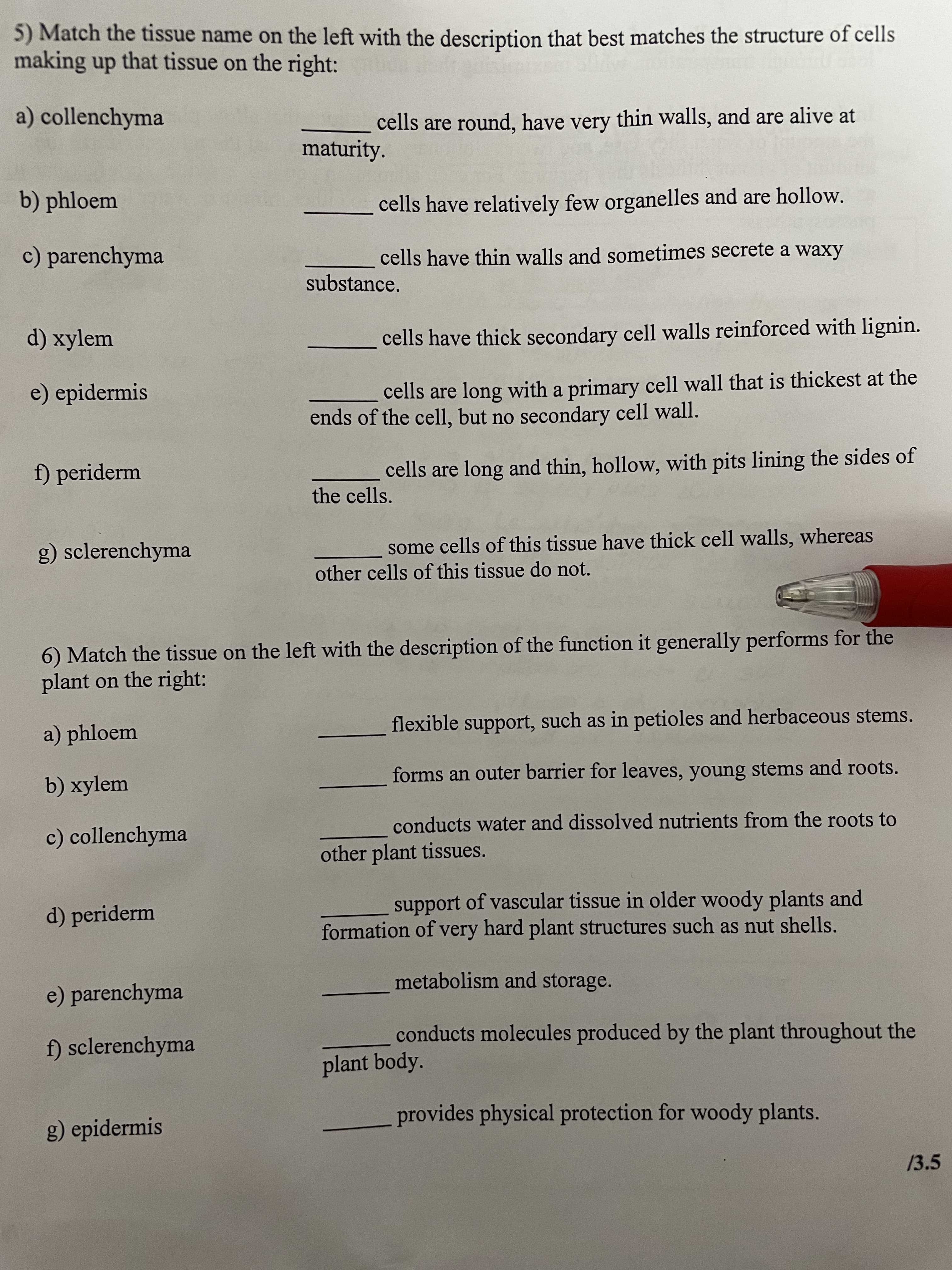5) Match the tissue name on the left with the description that best matches the structure of cells making up that tissue on the right: a) collenchyma cells are round, have very thin walls, and are alive at maturity. b) phloem cells have relatively few organelles and are hollow. c) parenchyma cells have thin walls and sometimes secrete a waxy substance. d) xylem cells have thick secondary cell walls reinforced with lignin. e) epidermis cells are long with a primary cell wall that is thickest at the ends of the cell, but no secondary cell wall. f) periderm cells are long and thin, hollow, with pits lining the sides of the cells. g) sclerenchyma some cells of this tissue have thick cell walls, whereas other cells of this tissue do not. 6) Match the tissue on the left with the description of the function it generally performs for the plant on the right: a) phloem flexible support, such as in petioles and herbaceous stems. b) xylem forms an outer barrier for leaves, young stems and roots. c) collenchyma conducts water and dissolved nutrients from the roots to other plant tissues. support of vascular tissue in older woody plants and formation of very hard plant structures such as nut shells. d) periderm metabolism and storage. e) parenchyma f) sclerenchyma conducts molecules produced by the plant throughout the plant body. provides physical protection for woody plants. g) epidermis 13.5
Cells and Tissues
The smallest, basic, and structural component of the body is a cell. It is the basic functional unit of life. No organism can exist on this Earth without a cell. Thus, it is the fundamental unit. These cells perform the major functions of the body. The term cell was given by Robert Hooke, who stated that all organisms’ bodies, whether unicellular or multicellular, are made of cells. In single-celled organisms such as amoeba and protozoa, all the body functions are performed by a single cell. The multicellular organisms have collective cells which perform a specific function in the body.
Types of Tissues
The smallest, basic, and structural component of the body is the cell. It is the functional unit of life. No organism can exist on this Earth without a cell. An organism's body, whether unicellular or multicellular, is made of cells. In unicellular organisms such as amoeba and protozoa, all the body functions are performed by a single cell. The multicellular organisms have collective cells which perform a specific function in the body. Tissues are a group of cells that work together to perform a particular function in the body. They make a series of networks or a system to coordinate with the different tissues in the body, forming a tissue system. The word tissue is derived from the Latin word 'weave.' Plants and animals have various kinds of tissue systems that differ in their work and composition according to the different requirements.
Tissue System
The smallest, basic, and structural component of the body is the cell. It is the functional unit of life. No organism can exist on this Earth without a cell. An organism's body, whether unicellular or multicellular, is made of cells. In unicellular organisms such as amoeba and protozoa, all the body functions are performed by a single cell. The multicellular organisms have collective cells which perform a specific function in the body. Tissues are a group of cells that work together to perform a particular function in the body. They make a series of networks or a system to coordinate with the different tissues in the body, forming a tissue system. The word tissue is derived from the Latin word 'weave.' Plants and animals have various kinds of tissue systems that differ in their work and composition according to the different requirements.

Trending now
This is a popular solution!
Step by step
Solved in 3 steps


